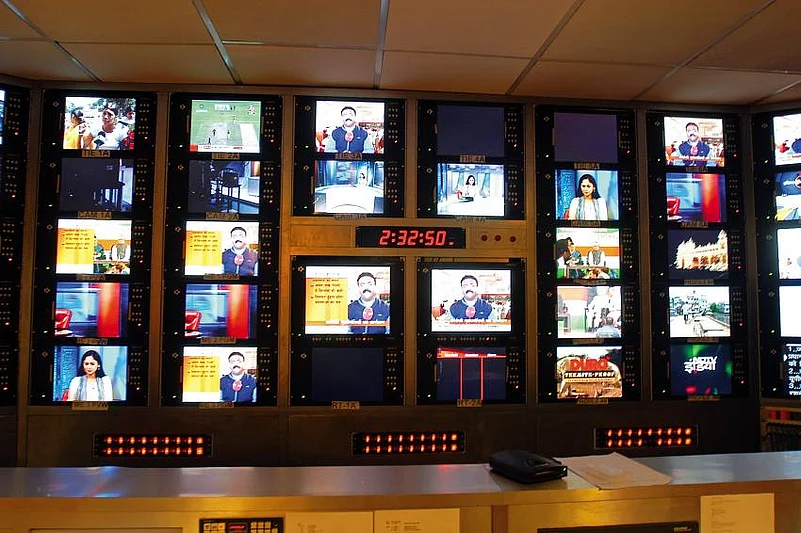“You Don’t Have to Publish Sides When One Side is Fascism” is the provocative headline of a piece in the left-wing American weekly The Nation. The article analyses the decision of The New York Times to publish on its comment page a piece by Senator Tom Cotton who called for a strong response against black protestors against police brutality. The New York Times acknowledged that the piece did not meet editorial standards, but that was only after its African-American reporters protested that the piece put them in danger; initially the paper said the article was in tune with the voice to “all sides of the spectrum.” In other words, balance.
Journalists are taught early on in their careers that they must always be fair and objective and strive to get ‘both sides of the story’. Essentially, it means that they should not inject bias or their own ideological or other kinds of views when they report something. Besides, they must get a response to, let’s say, an allegation. This is called being balanced.
Thus, if someone who gets arrested claims that he was tortured in police custody, then the police (the individual or the institution) should be asked to give their reaction. The police could refute or say they will inquire into the allegation—that must be reported alongside the allegation, even if the accuser’s version sounds plausible. This is really journalism 101.
But this notion of ‘balance’ is often carried to ridiculous lengths and is a fig leaf for the absurd convolutions to project a particular point of view. Balance then becomes the cover for false equivalences that news organisations deploy to show professionalism and to allow voices of hate, prejudice and plain bigotry. The most incendiary statements are given a platform on television channels—even if we take the charitable view that this is not done to increase viewership, we still have to consider whether such people should be given the oxygen of publicity.
For example, if some neta in UP says that those of a particular community are all treacherous and unpatriotic, spying for another country, what should a journalist do? Show this and get a ‘spokesperson’ from the community to refute it? Who is the best spokesperson? A religious figure, a political leader, the man on the street? Why not exercise discretion and not show the original, bigoted view, at all?
Another common practice of television channels is to invite a panel that heavily leans to one side and pretend it is balanced. I used to get often called to discuss an issue on TV, only to find someone from the Congress, the BJP, the RSS and another commentator who I knew was close to that ideology. The result often was the others ganging up against the Congressman and shouting to drown him out, with me a token objective voice. The result was pandemonium. The anchor leaned back with satisfaction, the channel was happy, the audiences got their nightly entertainment.
That’s what it is—entertainment, and dangerous at that, all in the name of balanced journalism. These are instances – too common, unfortunately – when the notion of balance is made a mockery of by journalists who actually may believe they are being professional. The question to ask here is—why debate that issue in the first place?
A counter question may well be—should journalists or publications then be ‘ideological’ and only push their agendas? Shouldn’t they be objective and let the reader/viewer decide?
The answers to this are easy. Publications should not push a particular ideology all the time—they should provide a platform for sensible commentary or analysis for every shade of political opinion. The operative word is sensible—a politician spewing hatred or making patently false assertions does not deserve the legitimacy of a place in a credible publication. Allowing a writer to claim that Muslims should be disenfranchised—as Subramaniam Swamy did, in DNA—is simply unacceptable. Regrettably that did not stop from channels from inviting him on their shows. Secondly, it is not as if publications or channels are exercising restraint in proclaiming their ideology, so that question becomes redundant.
In the present climate, with polarised politics and social views, with hate-spewing political leaders, with growing intolerance against minorities and dissidents, the media can and should be a beacon of hope for not just liberal, secular and democratic ideas, but also to ensure that extreme views don’t get into the papers or on television. Instead, the media in India has become part of the problem, either enthusiastically participating in whipping up of hatred against the vulnerable, or behaving in a mealy mouthed way by allowing the worst elements a free run of valuable time and space on their platforms. Entire generations of journalists are growing up with the idea that they are performing some kind of valuable service; they have few role models to look up to, since their own bosses, who should know better, are either sold out, ideologically committed to bigotry or are wishy-washy, without firm convictions or simply cowardly. Either way, Indian journalism is in a deep crisis, all in the name of ‘balance.’
(Sidharth Bhatia is the Founder Editor of The Wire. He tweets @bombaywallah.)
















